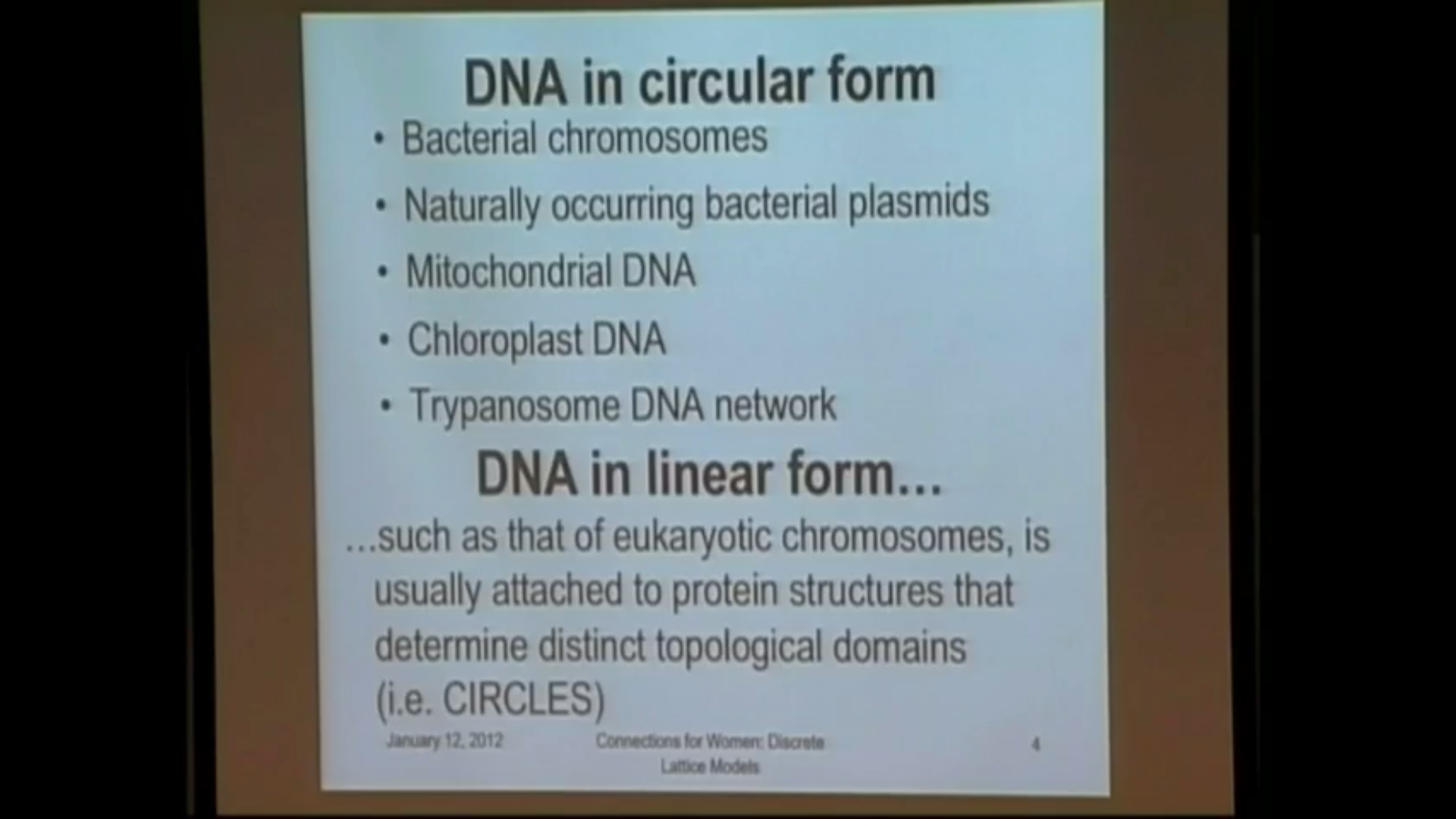Random knots and confinement considerations
Presenter
January 12, 2012
Keywords:
- lattice theory
- lattice models in mechanics
- SLE
- DNA models
- packing density
- folding problems
- knot theory
- chirality
MSC:
- 60K35
- 60J65
- 60J67
- 60Jxx
- 60-xx
- 82-xx
- 06-xx
- 92D20
- 92Dxx
- 92-xx
Abstract
DNA presents high levels of condensation in all organisms. We are interested in the problem of DNA packing inside viruses that infect bacteria (i.e. bacteriophages). DNA extracted from bacteriophage P4 capsids is highly knotted. Here use the packing of P4 DNA to motivate a couple of recent lines of work in our group. First, it is interesting to ask what is the minimal length of DNA needed to tie a particular knot type. Following on the steps of Y. Diao and of E.J. Janse van Rensburg, we attempt analytical and numerical characterization of the minimum length (also called minimum step number) needed to form a particular knot in the simple cubic lattice. Second, suppose that we are dealing with a set of random polygons with the same length and knot type, which could be the model of some circular DNA with the same topological property. In general, a simple way of detecting chirality of this knot type is to compute the mean writhe of the polygons; if the mean writhe is non-zero then the knot is chiral. We provide numerical evidence that the sign of the mean writhe behaves as a topological invariant of chiral knots, and we propose a new nomenclature of knots based on the sign of their expected writhes. This nomenclature can be of particular interest to applied scientists. This is joint work with Javier Arsuaga, Yuanan Diao, Kai Ishihara, Juliet Portillo, Rob Scharein and Koya Shimokawa.
